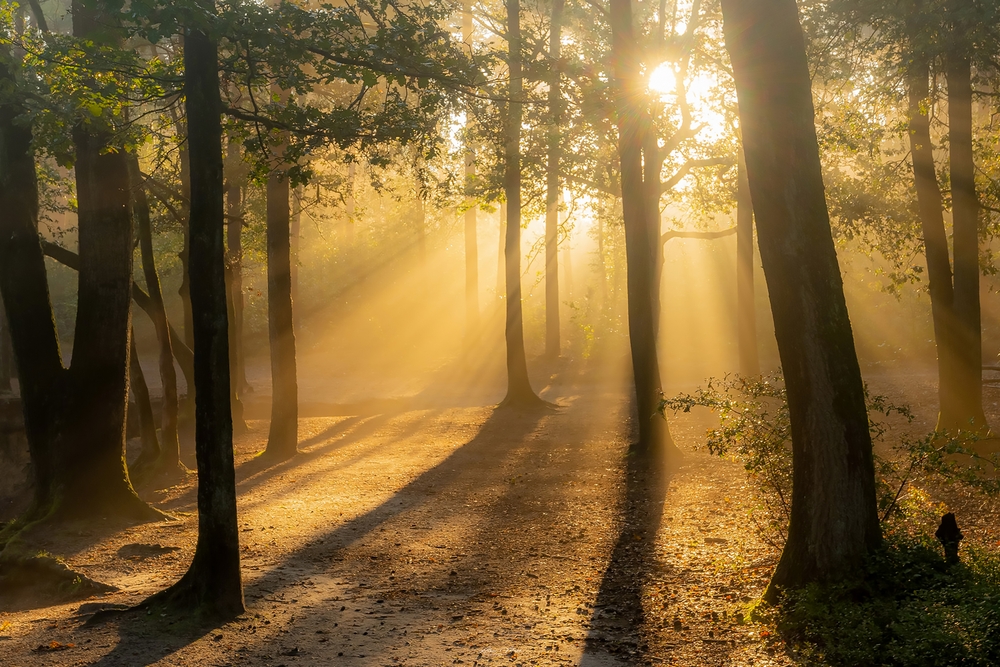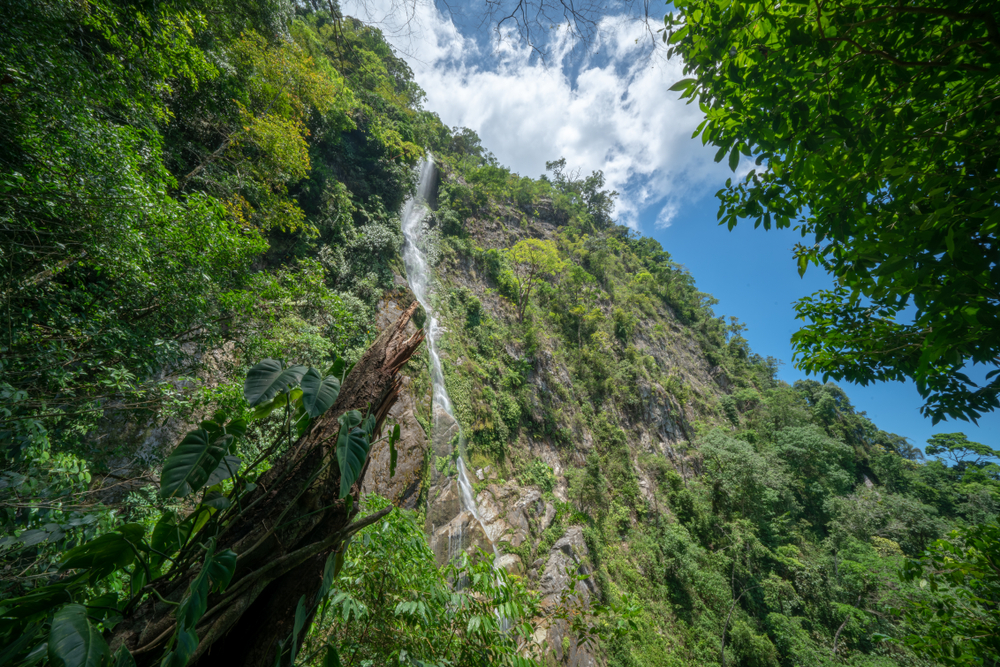The first national park in Honduras is La Tigra National Park, established in 1980. Located near Tegucigalpa, La Tigra was created to protect the cloud forest and its biodiversity. The park spans 92 square miles (238 square kilometers) and is known for its misty forests, waterfalls, and rich wildlife, including jaguars, pumas, and quetzals.
About Honduras National Parks
Honduras is home to an impressive array of national parks, with over 20 officially designated areas that protect the country’s rich biodiversity. These parks showcase a variety of ecosystems, from lush rainforests and towering cloud forests to pristine Caribbean coastlines and rugged mountain ranges. The national parks in Honduras provide sanctuary for an incredible variety of wildlife, including jaguars, tapirs, scarlet macaws, and countless species of amphibians and reptiles. Additionally, the country’s coral reefs and marine environments are some of the most biologically diverse in the region.
One of the most well-known parks in the country is Pico Bonito National Park, located in northern Honduras near La Ceiba. This park is named after its towering mountain, Pico Bonito, which reaches an elevation of over 2,400 meters (7,874 feet). It is one of the most ecologically diverse regions in Honduras, with dense rainforests, cloud forests, and river valleys. The park is a paradise for birdwatchers, boasting more than 400 recorded bird species, including toucans, eagles, and the elusive quetzal. Hiking trails and eco-lodges attract nature lovers and adventure seekers, while the park’s rivers provide opportunities for white-water rafting and kayaking.
Another significant park is Celaque National Park, home to the highest peak in Honduras, Cerro Las Minas, which rises to 2,870 meters (9,416 feet). Celaque is a cloud forest teeming with endemic plant and animal species. Due to its elevation and isolation, it is a refuge for rare and endangered wildlife, such as pumas and ocelots. The park’s well-maintained trails lead hikers through mist-covered forests, where they can experience the cool, damp climate that fosters an abundance of orchids, ferns, and towering trees. Celaque is a major source of freshwater for surrounding communities, emphasizing its importance in water conservation efforts.
On the Caribbean coast, Jeannette Kawas National Park (formerly Punta Sal National Park) is a stunning blend of tropical rainforest, mangrove swamps, and coral reefs. Located near Tela, this park is known for its extraordinary marine biodiversity, including sea turtles, manatees, and vibrant coral reef ecosystems. The park is also home to Garífuna communities, who have lived in the region for generations and contribute to sustainable tourism initiatives. Visitors can explore white-sand beaches, take guided boat tours through the mangroves, and snorkel in the pristine waters of the Caribbean.
La Tigra National Park holds the distinction of being Honduras’ first national park, established in 1980. Located just outside the capital, Tegucigalpa, La Tigra is a cloud forest that serves as a vital watershed for the region. Its dense forests are home to howler monkeys, armadillos, and a variety of bird species, making it a prime location for ecotourism. Well-marked trails and viewpoints provide breathtaking scenery, making La Tigra an ideal destination for both casual visitors and experienced hikers.
Honduras faces conservation challenges, including deforestation, illegal hunting, and encroachment from agriculture and urban development. However, conservation efforts, such as reforestation projects, eco-tourism initiatives, and community-led programs, have helped protect these natural treasures. Organizations and local communities work together to preserve Honduras’ national parks, ensuring that these biodiverse landscapes remain intact for future generations.
Honduras National Parks

Capiro Calentura National Park
Explore Now
Celaque National Park
Explore Now
Cerro Azul de Copan National Park
Explore Now
Cerro Azul Meámbar National Park
Explore Now
Congolón, Piedra Parada, and Coyocutena National Park
Explore Now
Cusuco National Park
Explore Now
Jeannette Kawas National Park
Explore Now
La Muralla National Park
Explore Now
La Tigra National Park
Explore Now
Montaña de Botaderos Carlos Escaleras Mejia National Park
Explore Now
Montaña de Comayagua National Park
Explore Now
Montaña de Yoro National Park
Explore Now
Montaña Santa Bárbara National Park
Explore Now
Nombre de Dios National Park
Explore Now
Omoa National Park
Explore Now
Patuca National Park
Explore Now
Pico Bonito National Park
Explore Now
Pico Pijol National Park
Explore Now
Port Royal National Park
Explore Now
Punta Izopa National Park
Explore Now
Sierra de Agalta National Park
Explore NowFAQ’s
1. What was the first national park in Honduras?
2. What is the largest national park in Honduras?
The largest national park in Honduras is Patuca National Park, covering approximately 946 square miles (2,450 square kilometers). Located in the eastern part of the country, Patuca National Park is a crucial area for biodiversity, featuring tropical rainforests, rivers, and wetlands. It is home to species such as jaguars, giant anteaters, and harpy eagles. The park also plays a vital role in protecting watersheds and indigenous communities living within its borders.
3. What is the smallest national park in Honduras?
One of the smallest national parks in Honduras is Cerro Azul Meámbar National Park, covering 78 square miles (202 square kilometers). Located near Lake Yojoa, this cloud forest park is known for its waterfalls, rich birdlife, and scenic hiking trails.
4. What is the most popular national park in Honduras?
Pico Bonito National Park is the most popular national park in Honduras. Located near La Ceiba, this park covers 434 square miles (1,124 square kilometers) and is famous for its waterfalls, hiking trails, and adventure tourism. Visitors come for wildlife spotting, whitewater rafting on the Cangrejal River, and the diverse ecosystems ranging from rainforests to cloud forests.
5. What percentage of Honduras' land area is protected through official National Parks?
Approximately 22% of Honduras’ land area is protected under national parks, reserves, and other conservation areas. This includes terrestrial and marine ecosystems safeguarded for biodiversity and ecotourism.
6. What other protected areas are there in Honduras?
Apart from national parks, Honduras has several other protected areas, including:
- Biosphere Reserves – Río Plátano, Cacique Lempira, and Transboundary Moskitia Biosphere Reserve
- Wildlife Refuges – Cuero y Salado Wildlife Refuge, Punta Izopo Wildlife Refuge
- Marine Reserves – Cayos Cochinos Marine Reserve, Bay Islands Marine Park
- Forested Reserves – Reserva Biológica de Montecillos, Reserva El Jilguero
These areas help preserve coral reefs, mangroves, cloud forests, and wetlands.
7. What nature attractions does Honduras have apart from National Parks?
Honduras is known for its incredible biodiversity and natural beauty beyond its national parks, including:
- Roatán & Bay Islands – Part of the Mesoamerican Barrier Reef, famous for scuba diving and marine life
- Lake Yojoa – The largest natural lake in Honduras, surrounded by lush mountains and waterfalls
- Pulhapanzak Waterfalls – A spectacular 140-foot (43-meter) waterfall near Lake Yojoa
- Celaque Mountain – The highest peak in Honduras at 9,416 feet (2,870 meters), with cloud forest ecosystems
- Mayan Ruins of Copán – A UNESCO World Heritage Site, blending history and nature
8. What species are endemic and unique to Honduras alone?
Honduras has several endemic species, including:
- Honduran Emerald Hummingbird (Amazilia luciae) – The only bird species endemic to Honduras, found in dry forests
- Pico Bonito Stream Frog (Duellmanohyla soralia) – A rare amphibian found in the cloud forests
- Honduran White Bat (Ectophylla alba) – Recognized for its small size and bright white fur
- Honduran Brook Frog (Duellmanohyla salvavida) – A critically endangered species found in highland forests
9. What is Honduras' main international airport?
Honduras has several major international airports, but the main one is Palmerola International Airport (XPL), located in Comayagua, about an hour from Tegucigalpa. It serves as the primary hub for international flights.
Other major international airports include:
- Ramón Villeda Morales International Airport (SAP) – Serving San Pedro Sula
- Juan Manuel Gálvez International Airport (RTB) – Located on Roatán Island
- Golosón International Airport (LCE) – Located in La Ceiba
10. What international airline companies fly into Honduras?
Several international airlines fly into Honduras, connecting the country with North America, South America, and Europe. These include:
- American Airlines
- Avianca
- Copa Airlines
- Delta Air Lines
- Iberia
- Southwest Airlines
- Spirit Airlines
- United Airlines
- Volaris
Many of these airlines offer direct flights from cities like Miami, Houston, Atlanta, and Mexico City.
11. Who manages the national parks of Honduras?
Honduras’ national parks are managed by the Honduran Institute of Forest Conservation, Protected Areas, and Wildlife (ICF – Instituto de Conservación Forestal). The ICF oversees conservation efforts, sustainable tourism, and environmental protection.
- Website: www.icf.gob.hn
In addition, some national parks and marine reserves have co-management organizations, including NGOs like Fundación PROLANSATE, BICA (Bay Islands Conservation Association), and AMITIGRA (Friends of La Tigra National Park).









































































